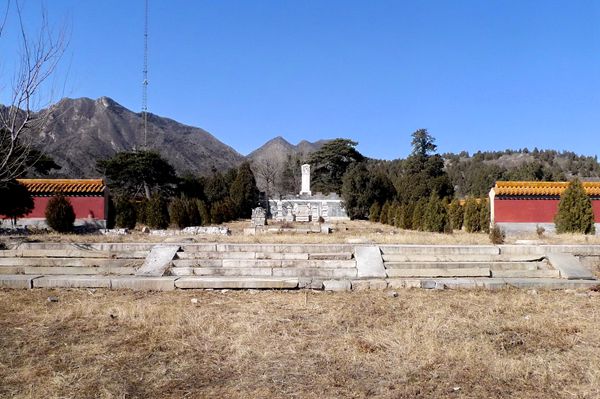


The Ming Tombs, which form a group of mausoleums, are those of 13 emperors in the Ming Dynasty (1368~1644). The tombs lie at the foot of Tianshou Mountain, in Changping District, about 50 kilometers from the urban area. They cover an area of about 120 square kilometers. Screened on the northwest by the lofty Yanshan Mountains, they sit on a small basin formed by floods; water flowing down the ravines meets on the plain and meanders to the east. Magnificent cemetery buildings with red walls, yellow tiles, upturning eaves stand on the eastern, western and northern slopes. In particular, the mausoleum of Emperor Chengzu lies in the center of the northern slope, which is flanked by the other twelve. The general layout conveys a solemn, harmonious order of importance, which is accentuated by the mountains and rivers.
Among the mausoleums, the largest is the Chang Mausoleum while the smallest is the Si Mausoleum, but all of them were built in roughly the same way. They form a group, yet each of them stands alone as an independent unit. The Ming Tombs are characterized by its large size, complete system, and intact preservation. As the representative of ancient Chinese imperial mausoleums, they reflect the richness of traditional Chinese culture, with very high historic and cultural value. Entirely forbidden in the past, they are now a tourist attraction famous at home and abroad. Currently four spots are officially opened to the public, namely the Ding Mausoleum, the Chang Mausoleum, the Zhao Mausoleum and the passages to the tombs.